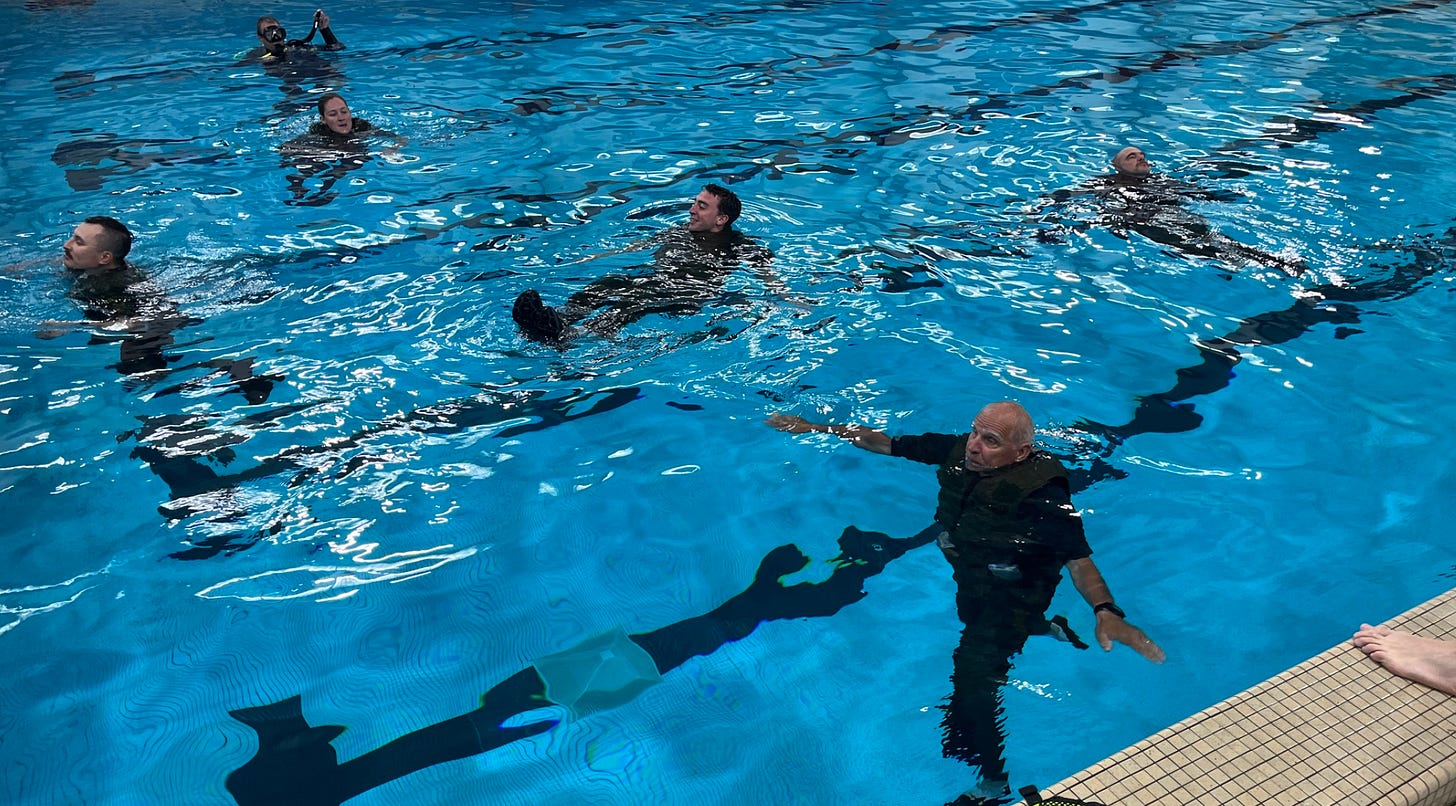Game Wardens Train for Vermont’s Boating Season with Grueling Water Survival Course
Boaters and swimmers should take warnings seriously, but they can take some comfort knowing that Vermont’s game wardens undergo extreme preparation.
Boating enthusiasts may not realize how quickly accidents turn deadly: Vermont’s Health Dept. reports an average of 10 drowning deaths per year (14 in 2024) in local waters. In one busy week this summer, three people drowned in Vermont waterways. These sobering facts have driven the Vermont Warden Service to equip its officers with intensive water survival training.
Boaters and swimmers should take warnings seriously, but they can take some comfort knowing that Vermont’s game wardens undergo extreme preparation.
Earlier this summer, a team of wardens and state police auxiliaries spent two full days (16 hours) in the water. They practiced swimming, treading, and rescue drills fully clothed in uniform, boots, and body armor. Instructors had them dive and struggle underwater, disengage from aggressors, and carry simulated victims – all wearing heavy duty gear.
For perspective, even the National Association of State Boating Law Administrators (NASBLA) notes its standard officer water-survival course is 2 days (16 hours), and that the advanced instructor “train-the-trainer” version runs 5 days (40 hours). Vermont Wardens Abigail Serra and Will Seegers just completed that five-day NASBLA instructor program, becoming certified to teach these high-stress drills.
The recent Vermont course covered every critical skill: swimmers fought against cold currents, managed gear and flotation devices, and executed rescue techniques. Key elements included:
Full-gear immersion: Every drill was done in uniform, life vests, and a weighted duty belt. (Officers’ normal equipment – belt, vest, boots – can weigh 18–20 pounds more in water. Trainees swam front crawl, breaststroke, and side stroke while wearing this gear, then practiced powering through exhaustion.
Combat and escape drills: Instructors simulated assaults in the water. Game wardens practiced releasing from a grappler’s hold while submerged, then safely subduing the attacker. These scenarios build the strength and reflexes needed to survive a surprise attack on a boat or shoreline.
Self-rescue and extraction techniques: Trainees learned to right overturned boats and swim to safety under stress. They practiced towing teammates and uninjured victims from the water. Ladders, ropes, and flotation aids were used to simulate pulling people out of swift or deep water. (
Equipment management: Officers trained to improvise with gear. They learned how to quickly remove or adjust belts, boots, and even firearms to gain buoyancy. For example, they practiced dropping a weighted gun belt and jettisoning loose gear once afloat, then quickly stabilizing the floatation vest.
Cold-water shock drills: Cold water can incapacitate even strong swimmers. Instructors cooled trainees with frigid pool water or early-season lake swims.
These demanding drills are backed by serious oversight. Vermont State Police’s specialized Underwater Recovery Team stood by to ensure safety, monitoring every dive and swim. The goal was not just individual survival skills, but building a cadre of instructors. Wardens Serra and Seegers, now certified water-survival instructors, will carry this knowledge forward by training their colleagues.
What This Means for Boaters: Thanks to this rigorous preparation, Vermont’s game wardens and police auxiliaries are ready for the worst. Their tough training – enduring cold water, weighty gear, and combat-like scenarios – means officers can respond quickly if boaters get into trouble. Boaters still must be cautious (wear life jackets, watch conditions, don’t swim alone), but behind the scenes a well-trained rescue force is on standby.


